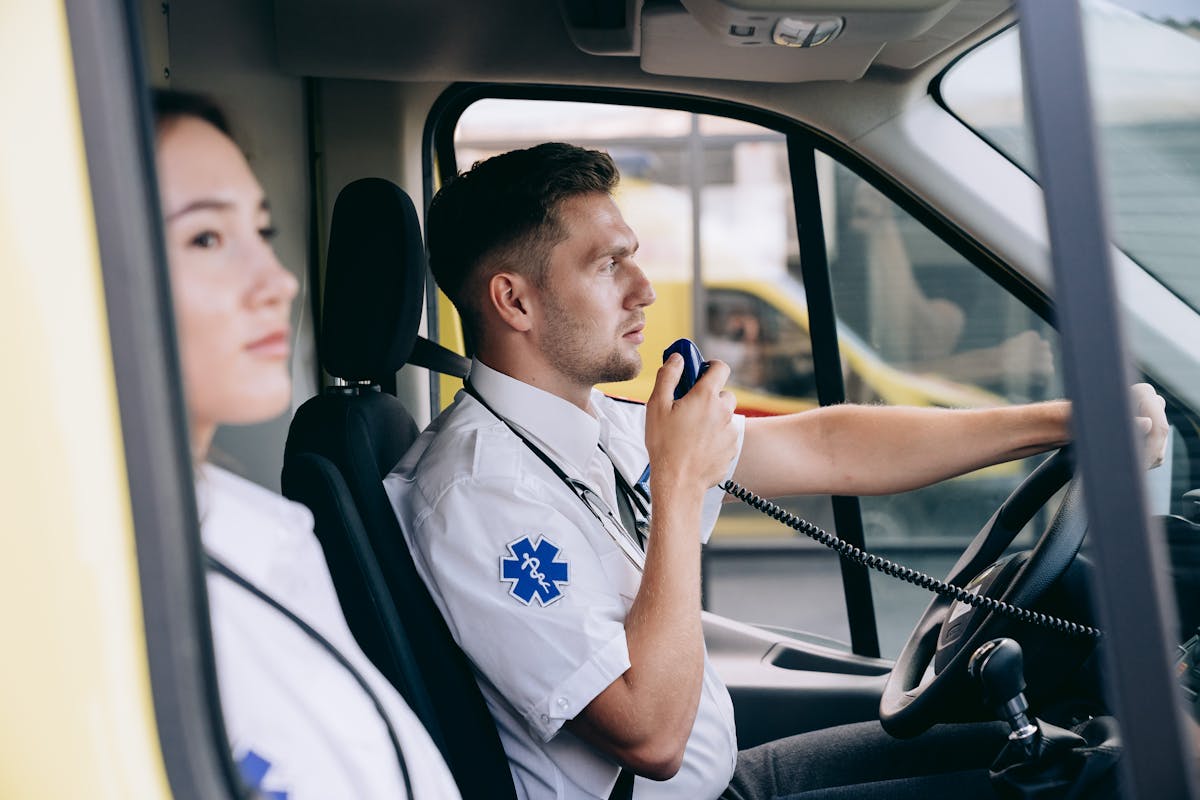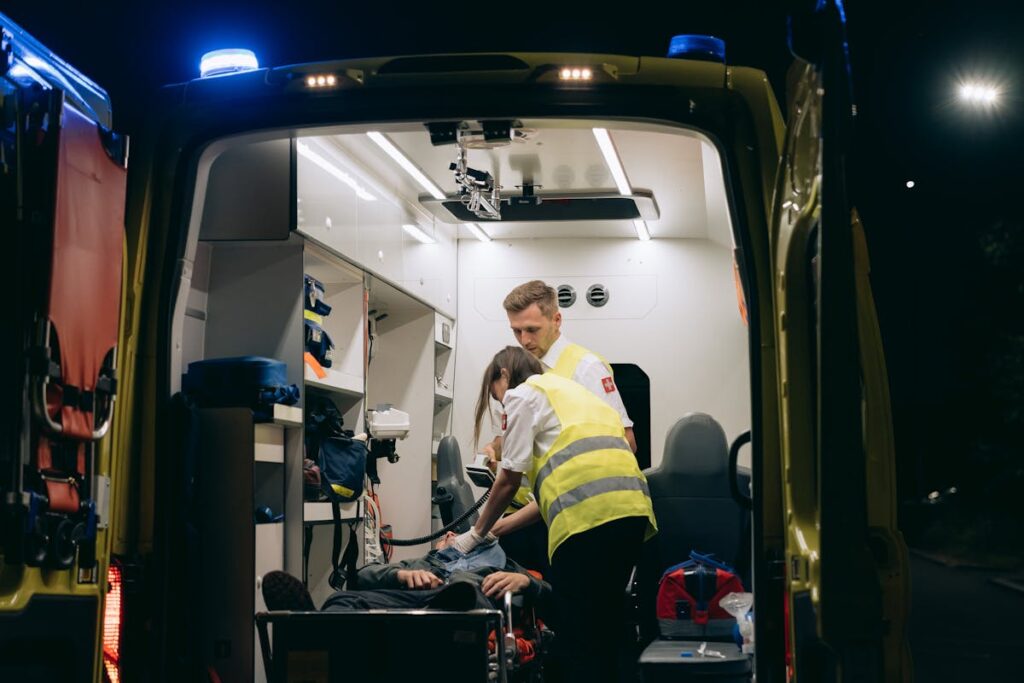The landscape of emergency response has been transformed by significant advancements in first-responder technologies and techniques. From cutting-edge communication tools to AI-driven analytics, these innovations facilitate precise resource allocation and enhance situational awareness. Portable diagnostic devices and drones provide critical, real-time information, while immersive training simulations guarantee responders are well-prepared. As personal protective equipment evolves, communities become more resilient. These developments prompt a deeper exploration into how they collectively enhance emergency service efficacy.
Cutting-Edge Communication Tools
How effectively can first responders communicate in high-stakes situations with the advent of cutting-edge communication tools? The integration of mobile messaging applications into emergency protocols enhances immediacy and precision in information dissemination. Mobile messaging allows for real-time updates, ensuring team members remain informed despite dynamic environments. Additionally, collaborative platforms facilitate seamless interaction among various emergency units, promoting coordinated responses. These platforms enable the sharing of critical data, such as geographical information and situational updates, thereby optimizing resource allocation. The convergence of these technologies provides a robust framework for maintaining operational integrity under pressure. However, the effectiveness of these tools is contingent upon network reliability and user proficiency, factors that must be meticulously managed to maximize their potential in crisis scenarios.
Innovative Medical Equipment
The integration of portable diagnostic devices and advanced life-saving tools is revolutionizing the efficacy of first-response medical care. Portable diagnostic devices, such as handheld ultrasound machines and rapid blood analyzers, enable immediate assessment of critical health parameters at the scene. Concurrently, advanced life-saving tools, including automated external defibrillators and portable ventilators, enhance the capacity to stabilize patients before they reach hospital facilities.
Portable Diagnostic Devices
Portable diagnostic devices represent a significant advancement in innovative medical equipment, offering rapid and accurate assessments in emergency situations. These devices utilize wearable sensors and diagnostic apps to monitor essential signs, such as heart rate, blood pressure, and oxygen saturation, in real-time. The integration of wearable technology enables first responders to collect critical data swiftly, enhancing their ability to make informed decisions on-site. Diagnostic apps further streamline this process by analyzing collected data and providing immediate feedback on potential medical conditions. This capability reduces the time required for traditional assessments, thereby improving patient outcomes. As technology evolves, these portable systems continue to improve regarding accuracy and ease of use, becoming indispensable tools in modern emergency medical response.
Advanced Life-Saving Tools
Emerging as vital components in emergency medical response, a variety of advanced life-saving tools have transformed the landscape of pre-hospital care. Life saving innovations such as automated external defibrillators (AEDs) and portable ventilators have become significant in improving patient survival rates. AEDs, designed for rapid deployment, deliver electric shocks to restore normal heart rhythm during cardiac arrest, exemplifying emergency response advancements. Similarly, portable ventilators provide important respiratory support in field settings, enabling first responders to stabilize patients more effectively. Furthermore, hemostatic dressings play an essential role in controlling severe hemorrhage, thereby reducing mortality in trauma situations. Collectively, these innovations enhance the efficiency and effectiveness of emergency medical services, underscoring the importance of integrating cutting-edge technology in critical care scenarios.
Integration of Artificial Intelligence
Although still evolving, artificial intelligence (AI) is increasingly becoming integral in enhancing first-responder capabilities. AI algorithms harness predictive analytics to anticipate incidents and optimize resource deployment. Machine learning applications enable autonomous decision making, allowing first responders to act swiftly and accurately. Smart sensors collect vast amounts of data, which are essential for real time monitoring and seamless data integration. Emergency simulations, powered by AI, offer realistic scenarios for risk assessment, improving preparedness. Additionally, virtual training environments use AI to provide first responders with continuous, adaptive learning experiences, refining their skills in controlled settings. These innovations not only augment human capabilities but also streamline operational efficiency, ensuring rapid response and minimizing potential harm during emergencies.
Deployment of Drones in Emergency Response
The deployment of drones in emergency response operations enhances situational awareness through real-time aerial surveillance, providing critical data that informs decision-making processes. These unmanned aerial vehicles (UAVs) are equipped to rapidly deliver essential supplies, such as medical kits and communication devices, to inaccessible or hazardous locations. The integration of drones into first-responder strategies optimizes resource allocation and improves response times in crisis situations.
Real-Time Aerial Surveillance
As advancements in technology continue to transform emergency response operations, the deployment of drones for real-time aerial surveillance has become an indispensable tool for first responders. These unmanned aerial vehicles (UAVs) offer unparalleled aerial reconnaissance capabilities, allowing responders to efficiently assess dynamic situations from above. Equipped with high-resolution cameras and thermal imaging, drones provide vital data through advanced surveillance technology. This enables rapid decision-making in disaster-stricken areas, enhancing situational awareness and safety. The integration of GPS and real-time data transmission allows for precise location tracking and mapping, essential for coordinating response efforts. By delivering a bird’s-eye view of unfolding events, drones considerably augment traditional response strategies, ensuring ideal resource allocation and minimizing risks to personnel on the ground.

Rapid Delivery of Supplies
In many emergency scenarios, the rapid delivery of vital supplies can greatly impact the outcome of rescue operations. The deployment of drones in emergency response has revolutionized emergency logistics by enhancing the efficiency and speed of supply chain management. Drones equipped with advanced GPS technology can quickly navigate challenging terrains to deliver essential items such as medical supplies, food, and water. They bypass traditional transportation constraints, reducing delivery times from hours to minutes. Additionally, their integration into the supply chain allows for real-time tracking and monitoring of resources, ensuring accurate delivery and inventory management. This capability is particularly important in remote areas where conventional transportation is impractical. Consequently, drones represent a significant advancement in optimizing the emergency logistics framework for first responders.
Real-Time Data Analytics for Decision Making
While advancements in technology continue to reshape various sectors, real-time data analytics emerges as a vital tool for decision making among first responders. Through predictive analytics, emergency personnel can anticipate incidents before they escalate, thereby enhancing resource allocation. By integrating various data streams, responders achieve improved situational awareness, important for maneuvering through complex emergencies. For instance, real-time traffic data and weather conditions can be processed to determine ideal routes, minimizing response times. Additionally, data from social media and sensors provide invaluable insights into unfolding situations, enabling more informed decisions. The ability to analyze and interpret data swiftly guarantees that first responders remain agile and effective. Consequently, real-time data analytics not only enhances operational efficiency but also greatly improves public safety outcomes.
Enhanced Training Methodologies
Building on the foundation of real-time data analytics, enhanced training methodologies for first responders employ state-of-the-art technology to simulate realistic scenarios and improve readiness. These methodologies leverage immersive simulation exercises that replicate the complexities of emergency situations, allowing responders to experience high-stress environments safely. Scenario based training is meticulously designed, integrating dynamic variables to challenge decision-making processes and adaptability. The use of advanced virtual reality systems and artificial intelligence facilitates a controlled yet diverse platform to practice tactical responses. By generating data-driven feedback, these training programs identify strengths and pinpoint areas for improvement, ensuring continuous skill development. Consequently, first responders are better equipped to handle real-world crises, enhancing their preparedness and effectiveness in life-threatening situations.
Advanced Personal Protective Equipment
Advanced personal protective equipment (PPE) plays a critical role in safeguarding first responders during high-risk operations. Recent advancements have focused on enhancing both functionality and durability, ensuring maximum protection without compromising agility. Impact assessment methodologies have been integrated into the design process, enabling real-time analysis of PPE performance under varying conditions. This allows for immediate feedback and iterative improvements, thereby elevating safety standards. In addition, equipment sustainability has become a paramount consideration, with manufacturers now prioritizing eco-friendly materials and processes. This shift not only reduces environmental impact but also extends the lifecycle of the gear, resulting in cost efficiencies. By addressing these factors, modern PPE sets a new benchmark in the protection of emergency personnel, aligning with evolving operational demands.
Improved Incident Command Systems
Amidst the complexities of emergency situations, optimized incident command systems (ICS) are essential for guaranteeing effective coordination and management of resources. Modern ICS frameworks enhance incident coordination by integrating advanced communication technologies that facilitate real-time information sharing among response teams. This integration guarantees that decision-makers have access to accurate situational data, thereby optimizing resource allocation. The modular structure of ICS allows for scalability, accommodating both small-scale incidents and large-scale disasters. By standardizing protocols, ICS minimizes confusion and guarantees a unified response across various agencies. Additionally, training programs emphasize proficiency in incident management software, enabling rapid deployment of resources. Such enhancements in ICS not only streamline operations but also markedly improve the overall efficacy of emergency response efforts.
Community Engagement and Public Awareness Programs
While effective incident response is critical, community engagement and public awareness programs play an equally essential role in enhancing emergency preparedness. These initiatives focus on community outreach and public education to bolster safety awareness among residents. Training workshops are organized to improve citizen participation, ensuring individuals understand their role in crisis response. Programs emphasize neighborhood vigilance, encouraging residents to monitor and report suspicious activities, thereby enhancing collective security. Volunteer recruitment is targeted to augment local emergency services, creating a robust support network. Risk communication strategies are developed to disseminate timely information, fostering informed decision-making during emergencies. By integrating these elements, communities are better equipped to respond to crises, reducing potential impacts and improving overall resilience in emergency situations.
Frequently Asked Questions
How Do First Responders Handle Mental Health During High-Stress Situations?
First responders address mental health during high-stress situations through peer support networks and stress management techniques, employing structured interventions and resilience training to maintain cognitive function and emotional stability, facilitating peak performance and decision-making under pressure.
What Measures Are in Place to Protect First Responders During Biohazard Incidents?
First responders are safeguarded during biohazard incidents through the use of thorough protective equipment and strict decontamination protocols. These measures guarantee minimal exposure to hazardous materials, thereby preserving their health and operational effectiveness.
How Does Climate Change Impact Emergency Response Strategies?
Climate change necessitates revised emergency response strategies, integrating climate adaptation and enhanced emergency preparedness. Responders must anticipate increased frequency of extreme weather events, ensuring resource allocation, training, and infrastructure resilience to effectively address evolving environmental challenges and threats.
What Role Does Cybersecurity Play in Safeguarding First-Responder Technologies?
Cybersecurity protocols and data encryption play critical roles in safeguarding first-responder technologies by preventing unauthorized access, guaranteeing data integrity, and maintaining confidentiality. These measures protect sensitive information and guarantee operational continuity during emergency response situations.
How Are First Responders Adapting to Increasing Urbanization Challenges?
First responders are adapting to increasing urbanization challenges by optimizing urban infrastructure and enhancing technology integration. This involves leveraging real-time data analytics, advanced communication systems, and interoperable platforms to efficiently manage resources and streamline emergency response operations.

